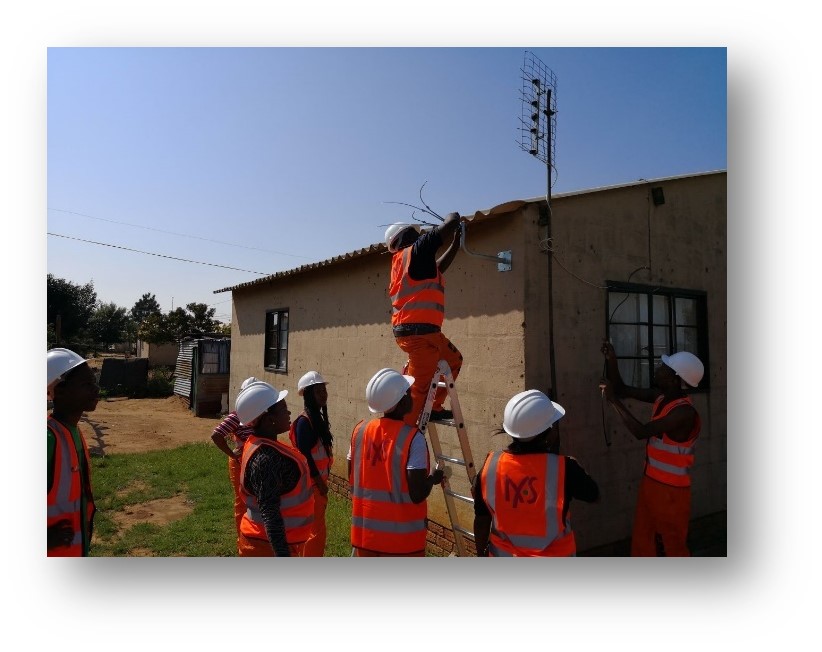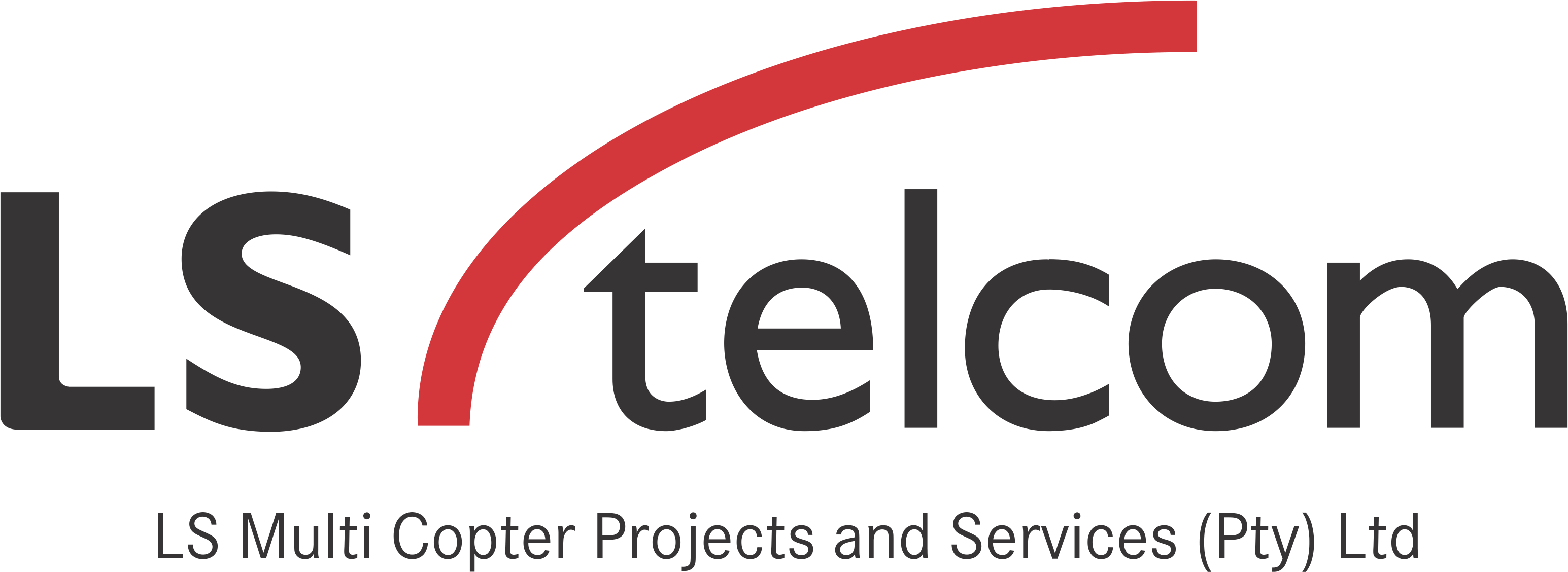MICTSETA COURSES
Training
Get the details about the content and outcomes of our training courses by clicking at the training title
Training Focus
Delegates who attend this course will learn how to predict interference between radio services on a wanted service between other transmissions of the same broadcast technology.
Course Outcomes
The course will address the following topics:
▪ Determine parameters for wanted and unwanted sites and interference potential for different broadcast services.
▪ Perform and Analyse interference calculations
▪ Determine interferences for service areas and make recommendations on how to mitigate interference.
Prerequisites
▪ Grade 12 or an equivalent qualification/B.Tech/S4 Electronic Engineering Diploma
▪ Successfully completed the unit standard: Predict Broadcast Signal Coverage #115032
Audience
▪ Delegates with an understanding of the fundamentals of FM;LF/MFand DVB-T2
broadcasting parameters
▪ Delegates who is already competent in using radio network planning software
▪ Delegates with an understanding of coverage and coverage overlap
▪ Delegates experienced with wave propagation models
| Day | Course Contents |
|---|---|
| Day 1 | Determine parameters for wanted and unwanted sites
|
| Day 2 | Analyse interference calculations
|
Training Focus
The focus of this course is for the learner to be able to predict broadcast signal coverage for LF/MF, FM and DTT transmissions using the applicable transmission parameters in a manual and automated environment.
Course Outcomes
The course will focus on the following specific outcomes:
▪ Determine parameters for wanted sites that will influence coverage for different broadcast services
▪ Perform coverage calculations
▪ Analyse coverage calculations
▪ Calculate signal coverage and prepare reports
Prerequisites
▪ Grade 12 or an equivalent qualification/B.Tech/S4 Electronic Engineering Diploma
▪ Successfully completed the unit standard: Measure, analyse and report on broadcast field strength #115029
Audience
▪ Delegates with an understanding of the fundamentals of components that affect signal coverage; options for coverage calculations; coverage contours; familiar with HF/FM and DVB_T2 coverage planning,
▪ Delegates who is already competent in:
❖ Specific broadcast technology under investigation
❖ Know the different components of a broadcast transmission system
❖ Understand antenna patterns and polarisation
❖ Understand frequency plans and assignments
❖ Has some idea on wave propagation.
| Day | Course Contens |
|---|---|
| Day 1 | Determine parameters for wanted sites
|
| Day 2 | Analyse coverage calculations
|
Training Focus
The focus of this course is for the learner to be able to understand an assignment plan is and how a specific Broadcast assignment plan can be modified.
Course Outcomes
The course will focus on the following specific outcomes:
▪ Determine requirement for frequency additions for applicable regional agreement and identify appropriate frequencies for coordination and plan modification
▪ Determine co-ordination process with neighbouring countries
▪ Determine notification process with ITU for specific Agreement for plan modification
Prerequisites
▪ B.Tech/S4 Electronic Engineering Diploma
▪ Successfully completed the unit standard:
❖ Calculate Interferences For Broadcast Frequencies Unit Standard #115028
❖ Measure, Analyse And Report On Broadcast Field Strenghts Unit Standard #115029
❖ Predict Broadcast Signal Coverage Unit Standard #115032
Audience
▪ Delegates with an understanding of the fundamentals of Spectrum management; Frequency Planning concepts; Coverage and Interference analysis;
▪ Delegates who is already competent in wave propagation; ITU and its role in spectrum management; familiar with broadcast radio planning software packages.
| Day | Course Contents |
|---|---|
| Day 1 | Determine regulatory provisions of applicable regional agreement
|
Training Focus
The five day training course will equip the learner with the necessary basic understanding of the conditional access system within the digital television head-end ecosystem as well as to explain the typical processes and procedures to be followed when adding or removing services from the channel line-up.
Course Outcomes
Delegates who attended this course will be able to:
▪ Explain conditional access installation and configuration
▪ Plan new services
▪ Add new services to Conditional Access Systems
▪ Solve problems when adding new services
▪ Comply with workplace health and safety requirements during the adding of new services
Prerequisites
▪ B.Tech or S4 Electronic Engineering Diploma with television as a subject
▪ Completed the course: Introduction to Digital Video Broadcasting Head-ends
Audience
▪ Delegates with an understanding of the fundamentals of television broadcasting
▪ Delegates who is already competent in Digital Video Broadcasting (DVB) Basics and DVB Service Information (SI) Basics
| Day | Course Contents |
|---|---|
| Day 1 | Explain Conditional Access Installation And Configuration
|
| Day 2 | Add New Services To Conditional Access Systems
|
| Day 3 | Comply With Workplace Health And Safety Requirements During The Adding of New Services
|
| Day 4 | Practical Exercises
|
| Day 5 | Practical Exercises (site visit) |
Training Focus
This training course will equip the learner with the necessary basic knowledge and skill to use logical methods and equipment to fault-find/troubleshoot professional broadcast transmission equipment.
Course Outcomes
Delegates who attended this course will be able to:
▪ Read and interpret schematic diagrams.
▪ Compile block diagrams of operations and functions of equipment.
▪ Relate information of the block diagrams to circuit boards.
▪ Test electronic systems (using instrumentation).
▪ Select electronic system fault location strategies.
▪ Locate faults in electronic systems.
Prerequisites
▪ Grade 12 or an equivalent qualification/B.Tech Diploma in Radio and Television Engineering
▪ Completed the course: Fundamentals of Broadcast Engineering
Audience
▪ Delegates with an understanding of the fundamentals of electronics, radio frequencies and wave transmission.
▪ Delegates who is already competent in the use of hand and power tools, basic soldering and wiring and familiar with test equipment
| Day | Course Contents |
|---|---|
| Day 1 | Read and Interpret schematic programs
|
| Day 2 | Compile block diagrams of operations and functions of equipment.
|
| Day 3 | Select electronic system fault location strategies
|
| Day 4 | Practical Fault-finding |
Training Focus
The purpose of this skills programme is to equip the learner with the necessary basic understanding of the satellite and digital television decoder (also known as Set Top Box – STB) operation and its role within the digital television signal delivery chain.
The course will consist of 2-day’s theoretical/practical training.
Course Outcomes
The specific outcomes to be achieved with this skills programme is to:
▪ Understand the fundamental principles of satellite television signal transmission and reception;
▪ Be able to identify and explain the signal processing performed in a satellite television decoder;
▪ Understand the fundamental principles of digital television signal transmission and reception;
▪ Be able to identify and explain the signal processing performed in a digital television decoder.
Prerequisites
Delegates should have a basic understanding of:
▪ video and television systems
▪ television receiver circuits
Audience
Technically skilled people who work in the broadcasting environment and need to use sophisticated methods and equipment to install, set-up, operate and fault find domestic and semi-professional digital satellite and terrestrial television receiving installations.
| Day | Course Contents |
|---|---|
| Day 1 | The Fundamental Principles Of The Processes Required In The Transmission Of Satellite Television Sound And Vision Signals
|
| Day 2 | Identify And Explain The Signal Processing Performed In Satellite And Digital Television Decoders
|
Example: Course participants performing a DTT TV decoder installation


Training Focus
The purpose of this course is to equip the learner with the necessary knowledge and skill to use sophisticated methods, functional and circuit diagrams, and diagnostic tools and other test equipment to locate and repair faults on broadcast equipment.
Course Outcomes
The course will focus on the following specific outcomes:
▪ Planning fault finding activities
▪ Diagnosing faults in broadcast equipment and systems
▪ Repairing or replacing broadcast equipment
▪ Comply with workplace health and safety requirements when repairing or replacing broadcast equipment
▪ Reporting and feedback on repair or replacement activities
▪ Solve problems related to repairing and replacing equipment
Prerequisites
Grade 12 or an equivalent qualification/B.Tech Diploma
Audience
▪ Delegates that understand the fundamentals of Audio, video, and data principles; electronic principles and component identification
▪ Delegates who is already competent in the use of hand and power tools; basic soldering and wiring; using test equipment and able to read and interpret electronic circuit diagrams
| Day | Course Contents |
|---|---|
| Day 1 | Plan fault finding activities
|
| Day 2 | Repair or replace broadcast equipment
|
